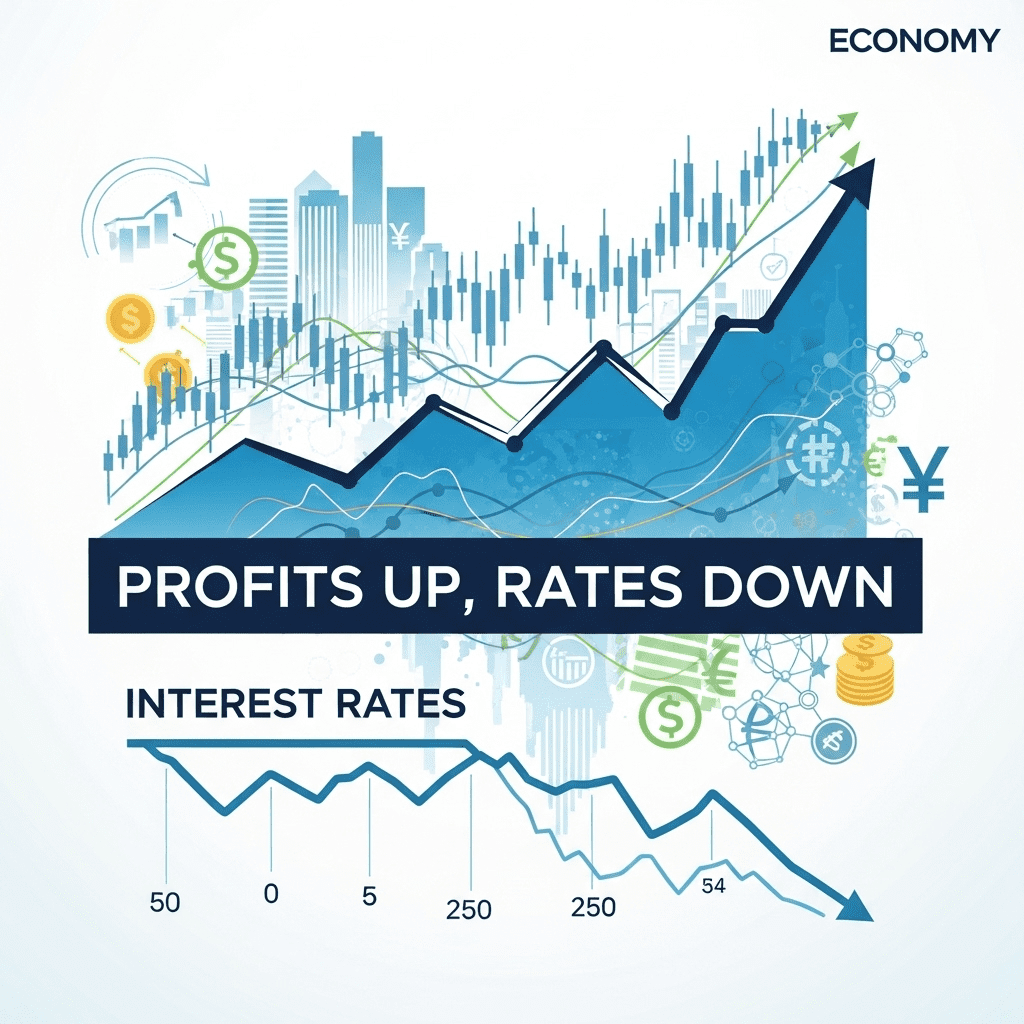The financial landscape of 2025 is being defined by a compelling dynamic: profits up, rates down. As corporate earnings surge and central banks cut borrowing costs, investors are rapidly adjusting their strategies to this unique combination. Understanding why this scenario is unfolding and what it means for the broader economy is essential for both institutional and retail investors aiming to optimize returns in the coming year.
The Impact of Profits Up, Rates Down on the Economy
The phrase “profits up, rates down” encapsulates a pivotal shift in 2025’s economic environment. Major corporations across sectors are reporting robust earnings growth, fueled by technology adoption, productivity improvements, and resilient consumer demand. Simultaneously, central banks—most notably the Federal Reserve—have initiated or maintained interest rate cuts to bolster economic momentum and offset residual uncertainties from previous inflationary cycles.
Historically, rising profits and falling interest rates have been catalysts for heightened market activity. Lower borrowing costs incentivize business expansion, capital investments, and consumer spending, while growing corporate earnings strengthen investor confidence. This combination frequently stimulates equity markets, real estate, and alternative asset classes, resulting in a broadly optimistic outlook among market participants.
Drivers Behind Higher Corporate Profits
Multiple factors are contributing to the continued rise in profits in 2025. Technology integration remains at the forefront, allowing companies to streamline operations and reduce overhead. Supply chain normalization after years of disruption has restored efficiencies and enabled firms to manage costs more predictively. Moreover, global demand, particularly from emerging markets and green technology sectors, is driving revenue growth for multinationals.
Companies have also leveraged strategic financial planning tools and adopted sustainable practices, aligning profitability with long-term ESG (Environmental, Social, Governance) objectives. This shift not only enhances brand value but also attracts institutional investments focused on responsible growth.
Monetary Policy: Why Are Interest Rates Declining?
Central banks’ decision to maintain a “rates down” approach in 2025 derives from several interwoven trends. Despite robust corporate performance, inflation has moderated due to improved supply chains and stabilized energy prices. Policy makers have shifted from aggressive quantitative tightening to a more accommodative stance, aiming to sustain employment gains and economic expansion without reigniting inflationary pressures.
Lower rates have far-reaching effects. For consumers, mortgages and loans become more affordable, stimulating housing and retail markets. For businesses, access to cheaper capital encourages investments in innovation and infrastructure. As highlighted in recent market reports, the economic benefits spread across diverse sectors, reinforcing a cycle of growth.
Effects on Investment Portfolios
The “profits up, rates down” environment necessitates a recalibration of investment strategies. Traditional fixed-income assets may underperform relative to equities, driving more capital toward stocks, real estate, and private equity. Investors are also exploring alternatives such as infrastructure funds and renewable energy projects, where growth prospects remain robust.
Diversification is key. Experts recommend maintaining a mix of growth-oriented assets and defensive plays, especially considering the potential for market volatility as global economic conditions evolve. Utilizing cutting-edge investment insights ensures portfolios remain adaptable to rapid changes in policy and corporate performance.
What Investors Should Watch in 2025
Looking ahead, monitoring the balance between profit growth and interest rate trends is vital. Any unexpected shift—such as resurgence in inflation or geopolitical tensions—could prompt central banks to revise their outlook, impacting market dynamics. Staying informed about corporate earnings releases, central bank communications, and sector trends will allow investors to anticipate changes and position their portfolios accordingly.
Conclusion: Embracing Opportunity in a Dynamic Climate
As profits rise and rates decline, opportunities abound for those who understand how to adapt. The 2025 economy presents both rewards and challenges, making it crucial to base decisions on reliable data, diversified strategies, and ongoing analysis. By embracing the “profits up, rates down” reality, forward-thinking investors can navigate market uncertainties—and capitalize on the positive momentum shaping the global economy.
